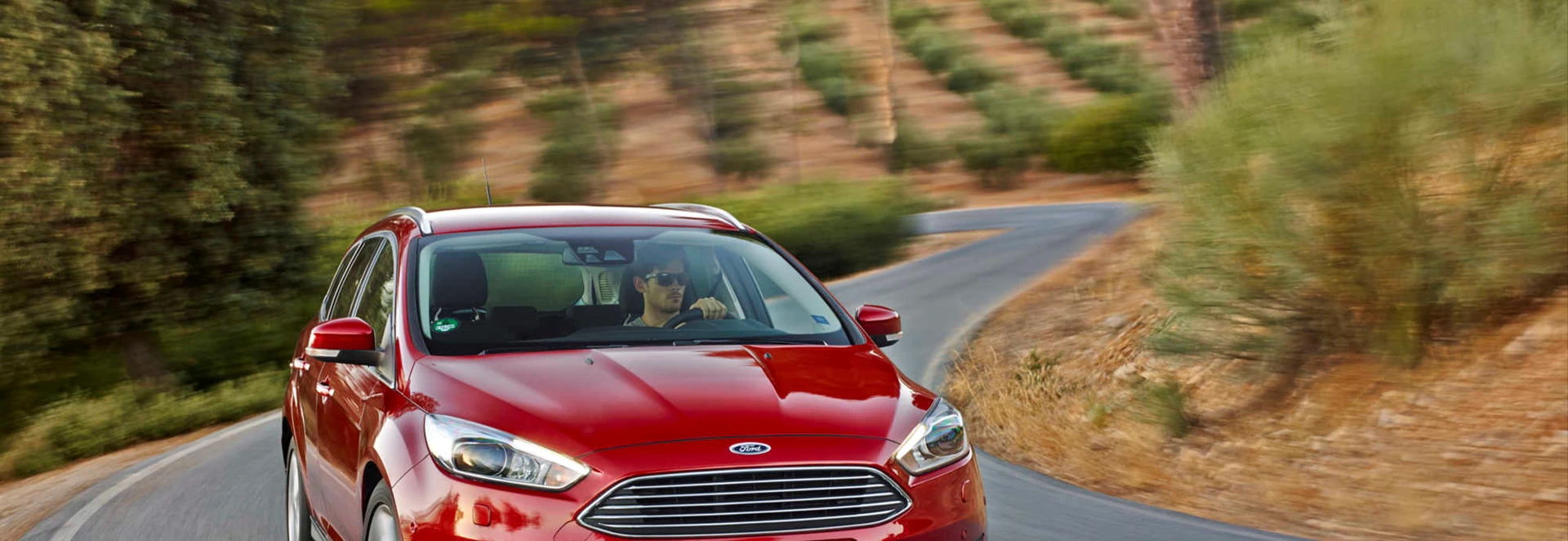Ford likes to call this the fourth-generation Focus, but it's really a development of the third introduced in 2011, albeit a comprehensive one. It looks more like a premium model, with narrower headlights and an upmarket grille behind which lie the formerly exposed self-adjusting air intakes. The interior has a less cluttered feel, with fewer buttons than before.
New features include systems to help you get into and out of parking spaces, improved Active City Stop, extra storage spaces in the centre console, more expressive satellite navigation, the updated SYNC 2 connectivity set-up and adaptive front lighting with eight headlight beams chosen automatically according to the car's speed and steering angle.
Noise levels have been lowered, the steering is sharper, fuel economy and CO2 emissions are better and there has been a more or less successful attempt to improve the handling. The Electronic Stability Control has a new feature called Enhanced Transitional Stability, which predicts and deals with stressful driving situations rather than waiting for them to happen.
The engine line-up includes a new 1.5-litre TDCi diesel engine which is expected to be as popular as the 1-litre petrol EcoBoost, along with a much more minority-interest 1.5-litre EcoBoost.
Performance
The 1.5 EcoBoost is available in 148bhp and 180bhp forms, the latter being briefly the most powerful in the range before the new ST hot hatch comes along. 0-62mph takes 8.6 seconds, but you have to work this engine hard to get the best out of it (it wakes up noticeably once you've gone beyond 4000rpm), and not many people are going to do this. The 148bhp 2-litre TDCi diesel is nearly as quick, as well as being substantially more economical.
Ride and Handling
The sharper steering means less driver effort.
Ford's claim of "class-leading driving dynamics" should be treated with healthy scepticism. The Focus rides quite beautifully on well surfaced, gently undulating roads of the type you can find in Germany (where the suspension was developed) but it has some trouble dealing with sharper bumps, and feels clumsier than a car of this size really should. Fitting optional 18-inch wheels makes it look very good but has a calamitous effect on the driving experience, and we would strongly advise against doing this. The sharper steering means less driver effort, and that's a good thing. Again, though, models with 18-inch wheels have a problem in that they can dart into corners slightly more quickly than the suspension seems able to cope with.
Interior and Equipment
After thirty years of building Escorts, Ford introduced the Focus in 1998. It's currently the UK's second most popular car, behind the Fiesta.
The less cluttered interior design will appeal to those existing customers who, when asked during market research, said that this was what they wanted. The satellite navigation is much more colourful and enjoyable to look at than the very basic (but still effective) set-up of the previous Focus. Its audible directions could be more helpful, since they don't always indicate whether or not you have priority at the next junction. "Continue to the right" could mean "avoid a side road to the left" or "take the second exit at the next roundabout". Like the last Focus, which was based on the same bodyshell, this one has only limited room for rear passengers, and would struggle to hold four six-foot adults. The luggage capacity of the hatchback is a reasonable 363 litres if the car has a tyre repair kit but only 316 with a space-saver spare wheel and 277 with a full-sized spare. The estate isn't available with a proper spare wheel but offers 476 litres with a space-saver and 490 with a repair kit. With the rear seats folded down, the load volume is around 1100 litres in the hatch and 1500 litres in the estate, depending on the puncture-resolving situation.
Cost
Estates cost £2,000 more than hatchbacks, and the most expensive model is the 2-litre diesel Titanium X automatic estate at £26,685.
Fuel economy and CO2 emissions are up to a fifth better than before. The lowest CO2 rating is 98g/km for the 1.5-litre diesel, which in both 94bhp and 118bhp forms has a £0 Vehicle Excise Duty rating. The highest is 137g/km for the 1.5 EcoBoost, though this drops by 10g/km if the car is fitted with start/stop. The cheapest Focus is the Studio (priced from £13,995 and the only one not fitted with DAB digital radio) but it's not expected to sell well, partly because the only available engine is a rather feeble 84bhp 1.6-litre petrol. The most popular trim level will probably be Zetec, accounting for 55 per cent of UK sales and costing from £18,295, with the better equipped, £19,795-on Titanium likely to attract 20 per cent of customers. Entry prices for the 1-litre EcoBoost and 1.5-litre diesel models, both in Style trim, are £17,295 and £17,995 respectively. Estates cost £2000 more than hatchbacks, and the most expensive model is the 2-litre diesel Titanium X automatic estate at £26,685. Prices for the ST, which comes in three trim levels and has a choice of petrol or diesel engines and hatchback or estate body styles, range from £22,195 to £27,095.
Our Verdict
The most popular car in its class was good before but has now become much better, and every bit as refined as it looks. Our choice would be a 1.5-litre diesel with sensibly sized wheels.




